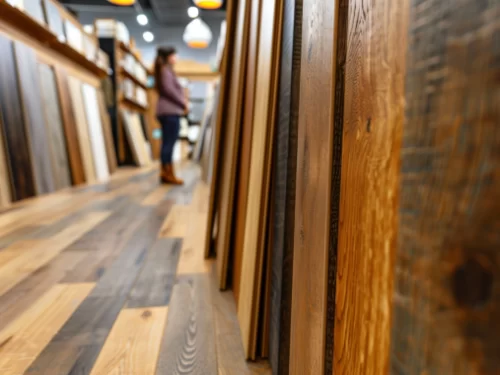
How Do I Know If I Have Solid Wood Floor?
Moving into a new home or simply trying to figure out your flooring can be exciting but also a little confusing! You might wonder: Do I have solid wood floors, or could it be something else, like laminate or vinyl? Knowing the type of floor you have can help you choose the best ways to clean, protect, and even update it. Here’s an easy guide to help you find out if your floors are real wood or something else.
1. Check the Edges of the Floor
One of the first things you can do is look closely at the edges of the flooring, especially in doorways, near baseboards, or where the floor meets the wall. Here’s what to look for:
- Real wood floors often have visible grain at the edges, and each plank might have slight variations in color and texture.
- Laminate floors usually have a uniform, repeated pattern with a flat appearance on the edges.
- Vinyl or tile can look like wood but usually has a smoother or shinier edge without visible grains.
If your flooring has grain that feels textured and not perfectly uniform, it’s more likely to be real wood.
For more tips on making wood floors look their best, read how to make hardwood floors shine.
2. Tap on the Floor
Another way to check if your floor is solid wood is to tap on it. Here’s what to notice:
- Solid wood floors usually sound firm and solid when you tap on them because they’re made from a single layer of wood.
- Laminate or engineered wood often sounds slightly hollow or has a softer, more muted sound, since they’re made of layers.
- Vinyl flooring tends to sound very flat when you tap on it.
If you tap and hear a deeper, solid sound, that’s a good sign that your floor is real wood.
3. Look for Signs of Wear and Tear
Over time, real wood floors develop a unique character. If your floors have scuff marks, scratches, or signs of fading, that could be a clue! Real wood often shows imperfections that add charm, while laminate or vinyl can be more resistant to scuffs.
To learn how to handle scuffs and scratches, check out this guide on covering scuff marks on hardwood floors.
4. Examine the Texture and Grain
One of the best ways to tell if you have solid wood is by feeling the texture of the flooring:
- Solid wood and engineered wood often have unique grains and textures that you can feel with your hand. No two planks will look identical, which adds a natural look.
- Laminate or vinyl flooring has printed patterns that can look like wood but tend to feel smoother and lack the natural grain of real wood.
For more information about myths around wood floors, check out the top 10 wood flooring myths.
5. Look for Expansion Gaps
Real wood flooring expands and contracts with humidity and temperature, so most wood floors are installed with small gaps along the edges, often hidden by baseboards. If you see small gaps or slight separations between the planks, this is another clue that you might have real wood.
- Solid wood floors usually show subtle gaps or slight shifting over time, especially in areas with high humidity.
- Laminate and vinyl don’t typically show these gaps, as they don’t react as much to temperature changes.
6. Check for Scratching and Repair Marks
If you see small scratches or repairs, there’s a good chance you have wood floors. Real wood can be sanded down and refinished, which is something you can’t do with vinyl or laminate.
For advice on choosing wood flooring that stands up to high-traffic areas, take a look at this guide on wood floors for high-traffic areas.
7. Do a Nail Test (If Possible)
If you’re able to, find a small, hidden area (like inside a closet) and use a nail or a screwdriver to press gently on the surface. Here’s what to expect:
- Solid wood will dent slightly because it’s real wood, and the mark can usually be sanded out if needed.
- Laminate or vinyl won’t dent as easily and might just show a small scratch instead.
This test should be done gently and only if you’re okay with possibly leaving a tiny mark on the floor.
8. Ask the Professionals
If you’re still unsure, you can always reach out to a flooring expert. They can quickly identify the type of flooring and give you tips on the best care routine. If you’re considering upgrading to solid wood, it might be helpful to know how much hardwood flooring costs. Check out this article on how much hardwood floors cost for a better idea.
Final Tips for Identifying Solid Wood Floors
- Look closely at the edges and texture.
- Listen for a solid sound when you tap on the floor.
- Check for gaps or signs of wear.
- Test for dents in a hidden spot, if possible.
Knowing whether you have solid wood floors can help you make the best decisions for care and maintenance. Solid wood floors can add beauty and value to your home, so if you’re lucky enough to have them, take care of them well!


